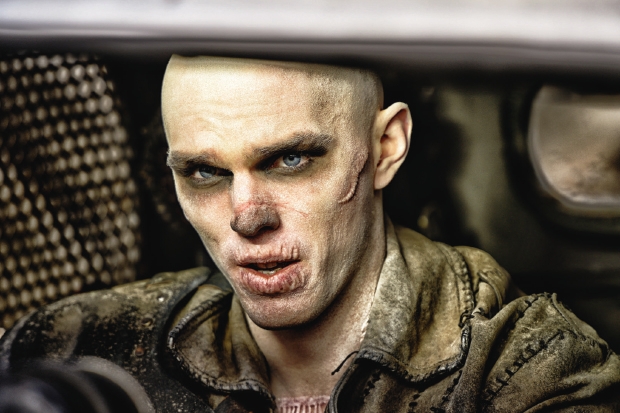No one goes slack-jawed in wonder at the movies any more. In our cyber-enabled times, kid designers can mega-pixelate any old apocalypse on to the screen of your local Imax. It puts the new Mad Max in a strange relationship with its hoary forebears. Mel Gibson first fired up his turbo-jalopy back in 1979 (two sequels followed with ever bigger engines and hair extensions). All these years on, Mad Max: Fury Road has a narrow strip of tarmac to navigate: it must keep faith with the trilogy’s pre-digital va-va-voom, while serving up enough throaty thrills to raise a tingle on the desensitised dermis of today’s lard-bucket gamer. Does it pull this off? Does his Holiness ride a popemobile?
This fourth instalment has been on director George Miller’s to-do list since the Nineties. It’s taken so long that its central notion — a future without ready access to water — barely qualifies as sci-fi. One casualty of the gestation is Gibson, currently impounded in the where-are-they-now file. Instead, performing essential repairs to the chassis while thumping along at 60, is Tom Hardy, our very own amalgam of rubber, teak and gristle. You’ve seen Hardy in all sorts, though probably not heard him say much. He says even less here beyond introducing himself as ‘the one who runs from both the living and the dead’. In short, new face, same old mopey loner who grunts and shunts. And does stunts: in one eye-popping sequence Hardy is precariously strapped like a prow to a rattling truck.
The other change is location. Out goes the outback, which maybe didn’t look parched enough to embody the dry-roasted future. In come the scorched umber sands, slithery dunes and craggy canyons of the Namib desert.








Comments
Join the debate for just £1 a month
Be part of the conversation with other Spectator readers by getting your first three months for £3.
UNLOCK ACCESS Just £1 a monthAlready a subscriber? Log in